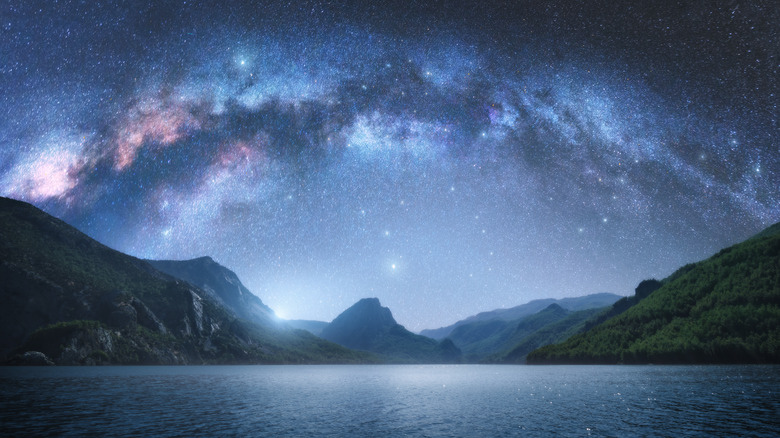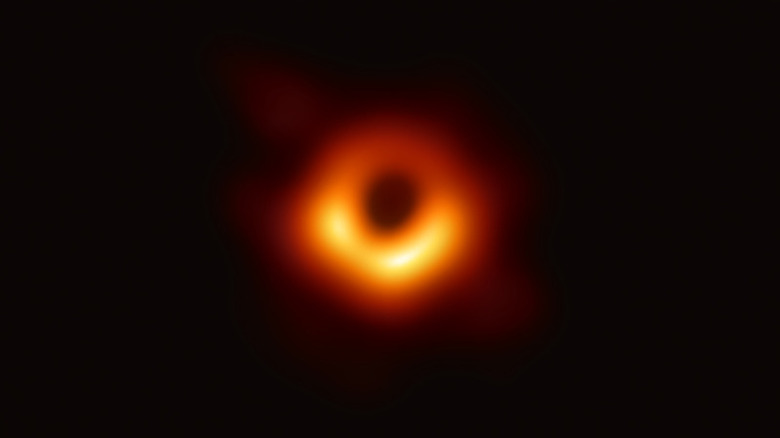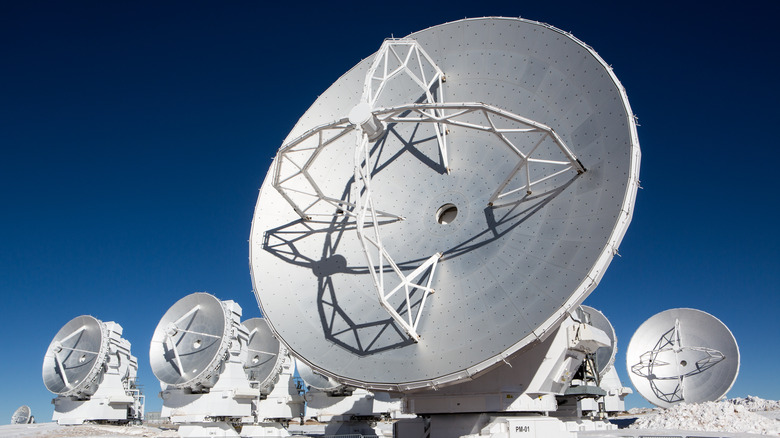The US National Science Foundation Has 'Groundbreaking' News About The Milky Way
The U.S. National Science Foundation, in tandem with the Event Horizon Telescope Collaboration, is soon expected to deliver "groundbreaking results about the center of our galaxy," and it's time to get hyped. Although the U.S. NSF has been very hush-hush where the details are concerned, one thing is made clear: the use of the word "groundbreaking" is not a coincidence. After all, the Event Horizon Telescope (EHT) delivered the first only image of a black hole we've ever seen so far, and that was just three years ago. What can we expect to see now when the announcement is finally made?
In all honesty, it's kind of hard to top an actual image of one of the biggest, most terrifying objects in the universe as we know it. Black holes are as fascinating as they are unexplored, and that is unlikely to change anytime soon. Although the image of the black hole, picturing the supermassive monster that sits at the very center of the Messier 87 galaxy, is blurry and kind of unimpressive on the surface, it's breathtaking when you consider what we're looking at. Now the question is: how do you even top something like this? What could be even more groundbreaking than a photograph of a black hole? The answer is — another black hole, but one that hits much closer to home.
We live in the neighborhood of a black hole
Outside of this blue and green planet we call home, countless stars and planets surround us. The Earth is part of a spiral galaxy called the Milky Way, and at its very center there is most likely a supermassive black hole. The black hole that our whole world revolves around is called Sagittarius A*, or Sgr A* for short, and it's staggeringly enormous — about 4.6 million times more massive than our sun, according to ViewSpace.org. For some additional comparison, our sun is large enough that 1.3 million planet Earths could fit inside it (via Cool Cosmos). Let that sink in for a moment.
Although we live relatively close to the black hole at the center of our galaxy, at an estimated 26,000 light-years of distance, it was Messier 87 (M87) that became the first black hole ever pictured. According to NASA, the M87 galaxy is around 54 million light-years away from Earth and may be up to 6 billion times more massive than the sun. Despite the unimaginable size of the galaxy (and thus, the black hole within it), you'd think that it'd be easier to photograph something that's 26,000 light-years away rather than something that's 54 million light-years away. However, in the case of our own Milky Way galaxy, the fact that we reside within it actually works to our disadvantage. We're surrounded by cosmic gas and dust, and there's even more of both between us and the center of the Milky Way. But who wouldn't want to see the black hole in our immediate neighborhood?
How to watch the big reveal?
A few signs point to the U.S. NSF and EHT planning to reveal an image of our local black hole. For one, the event says that the groundbreaking results pertain to the "center of our galaxy." The announcement may not talk about a black hole in particular, but one of the links on the page is "https://beta.nsf.gov/blackholes" — implying that this could really be it. If that proves true, we may be mere days away from seeing Sagittarius A* for the first time.
This seemingly unprecedented announcement will take place on May 12, 2022, starting at 9 a.m. EDT. Although this is an in-person event, it will also be streamed live at the link above, as well as on the official Facebook page for the U.S. National Science Foundation. During the event, multiple experts will be speaking, including research scientists, astrophysicists, and professors from some of the most prominent organizations in the country, such as the NSF itself, MIT, Harvard, Caltech, and the University of Arizona.
Until May 12 rolls around, we won't know with any certainty what exactly it is that the NSF is going to announce. Will it be aliens? A potentially habitable exoplanet? Something else equally fascinating at the very center of our home galaxy? It could truly be anything, but right now, all signs point to new information about the Sgr A*. Whether we'll be getting an image remains to be seen, but even if we only get groundbreaking information without a matching visual, it will still be a huge day for science. Any recent black hole discovery is sure to make the headlines, and the fact that Sagittarius A* is so close to us only makes it all the more exciting.


